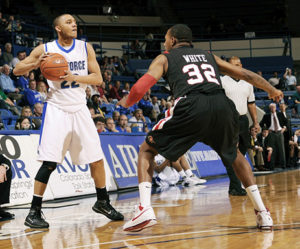Nine principles to crack zone defenses
Playing against a tough zone defense can be a coach’s worst nightmare. Players get used to running man-to-man offense, so a zone often creates turnovers, confuses players and limits scoring opportunities.
 To break down zones, utilize a comprehensive strategy incorporating the following nine principles. Many teams are adept at using one or a few of the principles, but having players buy into all nine is key to beating a zone.
To break down zones, utilize a comprehensive strategy incorporating the following nine principles. Many teams are adept at using one or a few of the principles, but having players buy into all nine is key to beating a zone.
1. Practice against good zones.
If you’re a coach who holds a bias against using a zone defense in your coaching philosophy, then now is the time to open your mind. Your players need to practice playing zone on the defensive side of the ball.Don’t just stress man-to-man defense, otherwise, when it comes time for your offensive players to break down a zone, they may not take that style of defense seriously. Instill in your players the fundamental elements of a zone, and teach them how it is an effective form of defense.
Some of these fundamental elements include:
- Having bottom defenders stay on top of offensive players at all times to limit entry passes and screens.
- Closing out with hands high to smother the offense and force offensive players to think more before passing.
- Zealously guarding the high post. Jump on passing lanes, and work hard to cover entry into the high post.
2. Run the ball.
Even if you normally don’t run the ball, consider it versus a good zone defense. By running, your team beats the defenders down the floor so they don’t have a chance to set up their zone.
Zone defenders are taught to run to spots. They typically aren’t in a good defensive position during their first few seconds at the defensive end. Attacking retreating zone defenders with the dribble generally leads to the defenders having to reach in and foul, as their feet aren’t set.
3. Pressure the ball on defense.
Zones usually slow down the game and lower the score. To counter this, pressure the ball, play the passing lanes and create some steals to jump-start your offense.
4. Swing the ball quickly.
Zones have a weakness against ball movement. Have your players swiftly but carefully move the ball through the defense via the high post rather than around the defense.
Zone defenses usually practice their slides against coaches passing the ball around the perimeter. Passing through the middle constricts the zone and makes the defenders have to run quickly to recover when the pass moves out of the middle, which leads to your offensive players having an easier time with dribble penetration.
5. Screen the zone.
Zone defenders have specific responsibilities during rotations, so the offense knows ahead of time where each defender will be in a given situation. Knowing the exact position of a defender makes it easier for your offensive players to set screens (especially baseline screens).
Use your offensive player personnel to the best of their abilities — if you have a great shooter, run him or her off double screens against the zone.
6. Know the strength, attack the weakness.
All zones have strengths, but with strengths come weaknesses in other areas. Know the weaknesses of each kind of zone. Against a 2-3, do not force the ball into the low post from the wings. There are three players in a triangle around the basket, which easily allows the defenders to help in the lane. The weakness for most two-front zones is at the top, where you can overload the two defenders.
Against a 1-2-2, the weakness is in the low post. With three defenders in position to pressure the perimeter, the baseline is an area of weakness for the defense.
Most zone attacks need strong post play — even when attacking a 2-3. High-low passing from the high post into a back-posting center is an effective way to eliminate the natural double-team normally presented by a 2-3. Utilize your best shooter as a baseline runner to draw out the bottom defender to create a 1-on-1 situation in the low post. To move the ball inside against a 1-2-2, attack by keeping your posts in the short corner and mid-post areas.
7. Quality shooting.
 The best way to beat a zone is to shoot the ball well. This is easier said than done.
The best way to beat a zone is to shoot the ball well. This is easier said than done.
Have players find time to shoot the ball, even beyond the scope of practice. Also, design drills that are game-like in nature and are competitive. Plus, constantly emphasize proper shooting form. Knocking down shots extends a zone and creates more scoring opportunities.
8. Attack at different angles.
Have a few set plays to chip away at zones. Probe the defense and look for areas where it might be vulnerable. Mix up your attack and do not keep coming at the zone from the same angle. For example, after running a continuation offense and trying to get the ball inside, run a high double screen for a 3-point shot, and then run a baseline double screen for a shooter.
9. Double up on weak-side boards.
Design all of your zone offenses to send two players to the weak-side boards. Send the weak-side wing down and have the weak-side post player engage the block-out. If you’re using a high or mid-post in conjunction with the ball-side, low-post player, the mid-post or high-post player is responsible for going to the weak-side boards.









